This is the catalog of an exhibition held at University of the Arts, The Rosenwald-Wolf Gallery and the Great Hall, Nov. 20-Dec. 22, 1987. It documents the design and construction of two special architectural objects by late architect and educator John Hedjuk.
(Drawings by John Hedjuk and Meton R. Gadeiha – Architect in charge of Detailing and Construction and author of the text below, Photographs by Helene Binet)
You can find a full pdf (and other format) book on Archive.org
Via: Mika Savela

“For I do not seek to understand that I may believe, but I believe in order to understand. For this I believe that unless I believe, I should not understand.”
—St Anselm (1033-1109), Proslogion 1The announcement that in Riga there are aeroplanes in which you can fly over the city simultaneously filled us with courage and fear. Courage, because where there is ,action beyond our self assured control, things are, generally done in ways that stir our need to use nerves.
Fear—fear of the all undertaking; fear of the journey, across the skies; fear of the pilot’s lack of ability; fear of the machine. All expectations are false, all one’s ,memories of Riga get completely mixed up with each other as soon as we get back home; they fade, and we cannot rely on them.
Courage, fear and mostly a story to be recounted when returning home take us to the sky above the lowland country facing the Baltic. We fly in a small aeroplane of real red, blue and yellow coloring.
There, in the sky far above the ground, what you see is not the same visual memories as when walking on the streets of the city. A strange, slow and irresistible transformation develops over Riga. A new series of buildings and structures take place inside and around the old ones. those in agreement with our earlier images of the city.
This new architecture adapts itself easily to the existing one and brings over Riga a layer of mystery and silent words that dwell among its inhabitants. These buildings and structures tell us stories with phrases that challenge the laws on the making of man’s surroundings.
The pilot looks over slowly in our direction, looks away from us in another direction, but his real view is into himself always. He is flying now, nothing is more natural for him. This feeling of naturalness, with the simultaneous, general feeling of the extraordinary that cannot be withheld from him, contributes to his manner. Surprise and disbelief that is revealed in our minds and faces give.
Its place to the pilot’s naturalness that the wind carries to us. As already too patient in expecting a question that does not come, he says, “This is the Riga Project, which can only be seen from here.” This genuineness and the mixed noise of the struggle between wind and machine fill the vacuum around and inside us, seeing things that we could not trust.
Now on the ground we search throughout the city in a frantic need to determine that what we saw from the sky can be seen on the streets of Riga. Our erratic walk takes us to the back of a building, a large one near the center of the old city. On the wall of the building there is a small poster: “The Riga Project—Subject-Object,” In a moment we are inside of a great skylighted hall looking at two tall structures. We have already seen them, but from another place and at another time.
To look and walk around these two tall structures on a quiet afternoon, brings us a complex mixture of emotions not so removed from the pilot’s naturalness. This naturalness equals the quiet sensation of reaching a place where architecture is beyond its role of being only a physical shelter for man. These two structures belong to the complementary side of the role of architecture, the one that we always forget; to shelter our dreams and the mystery of our presence here. In looking at the two structures we are certain that inside there is a part of ourselves.
– Meton R. Gadeiha



























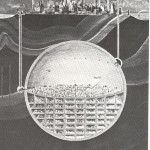
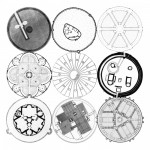
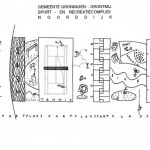
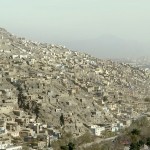
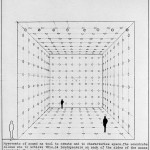
Leave a Reply